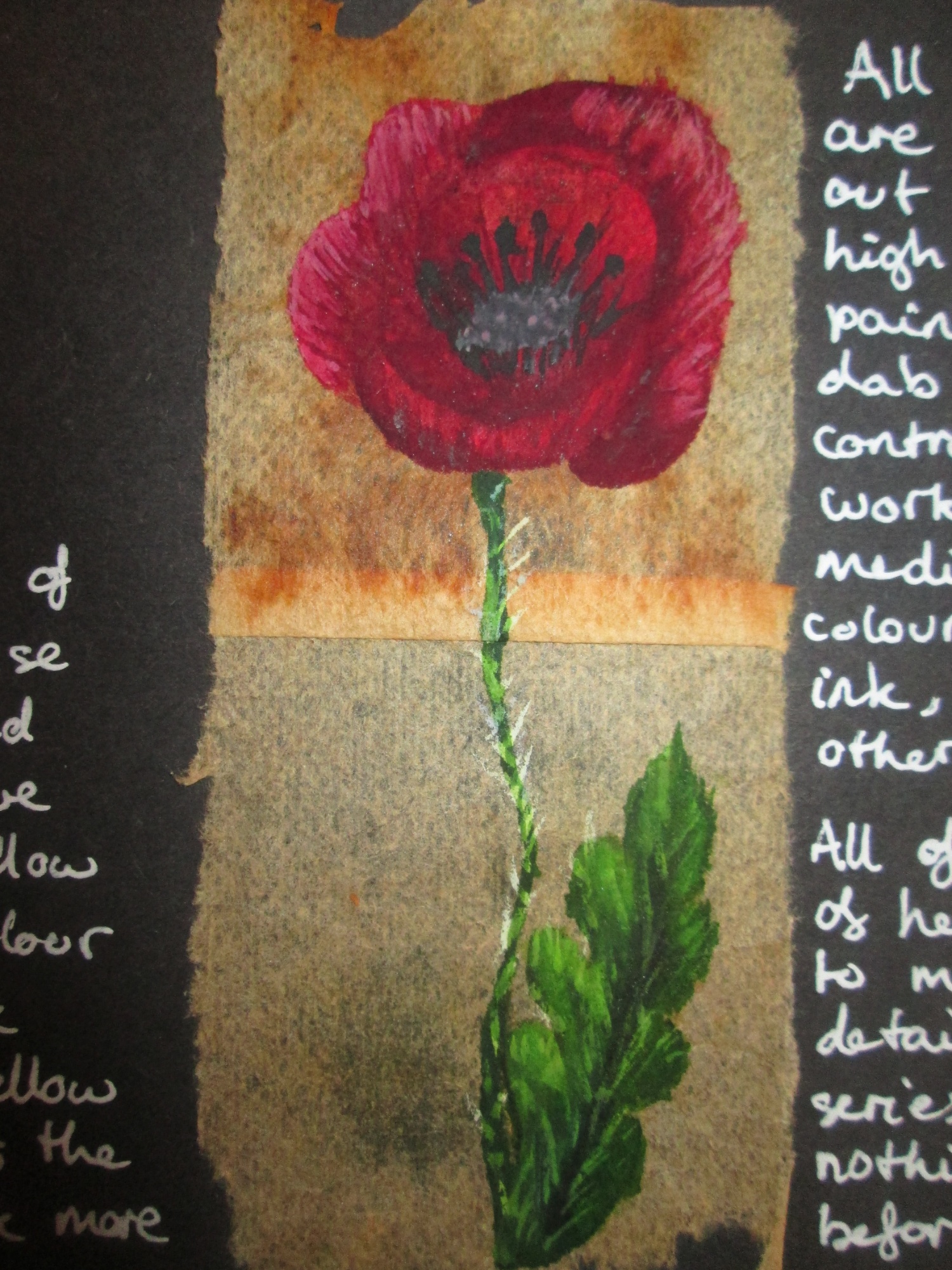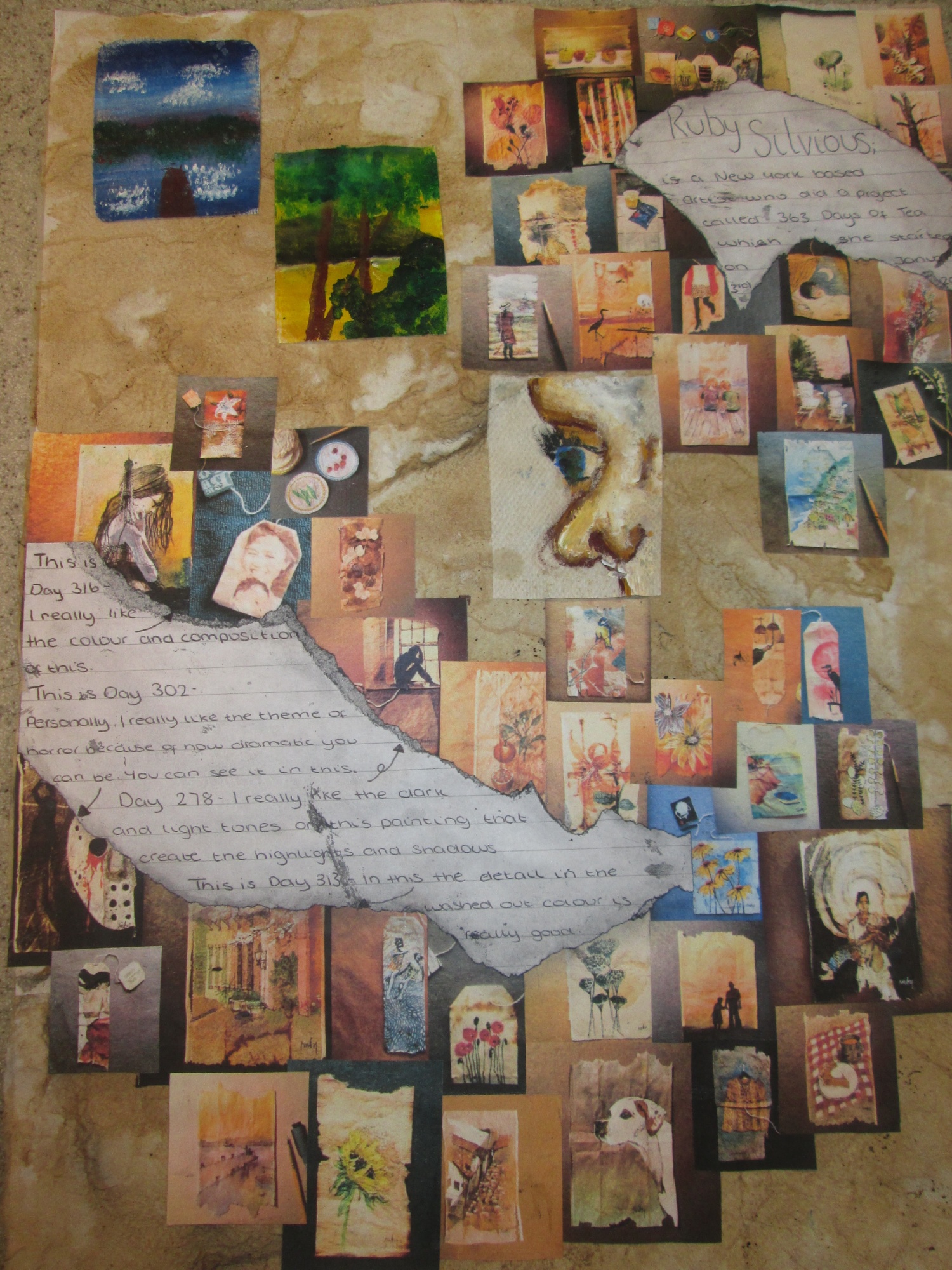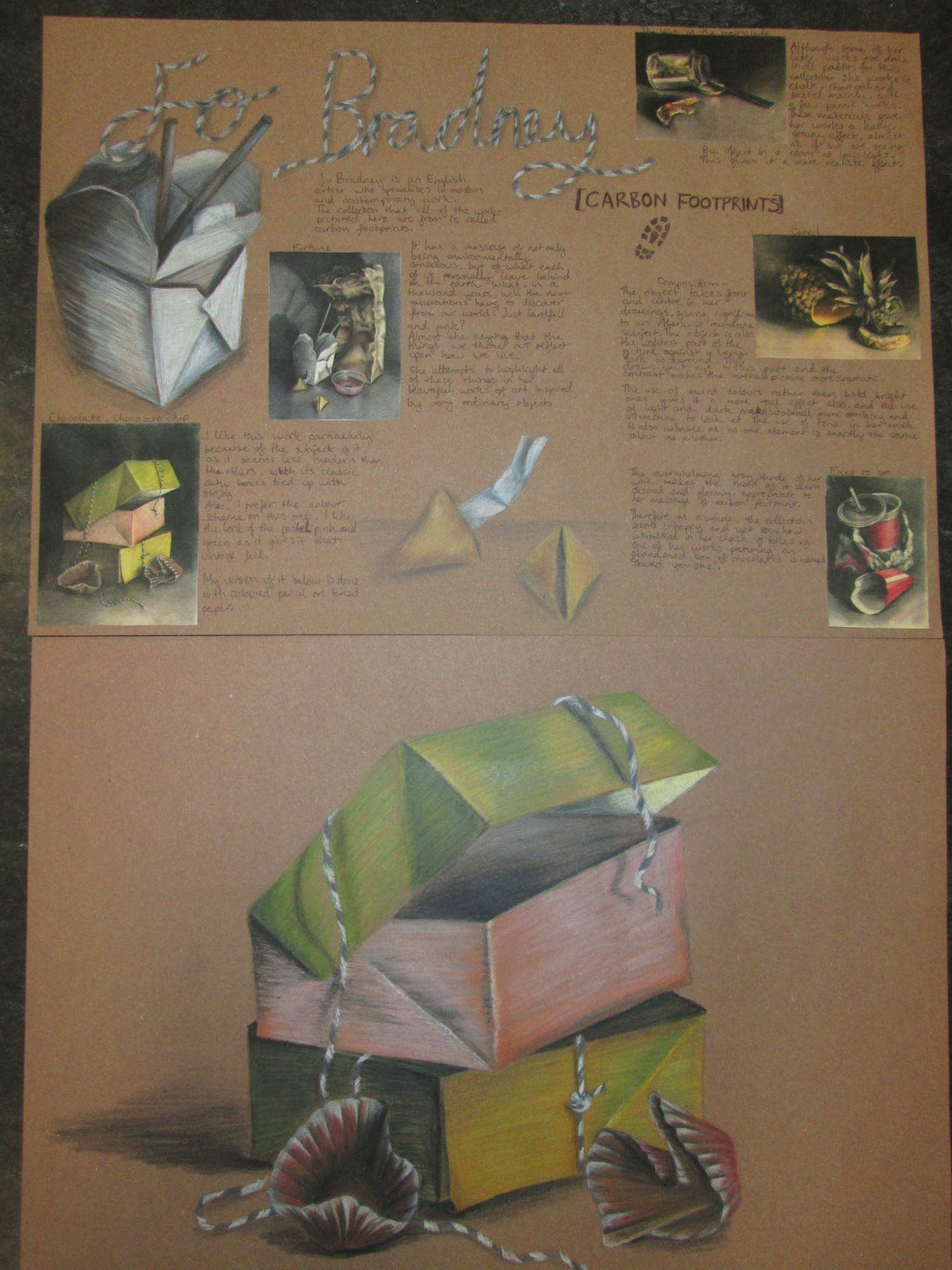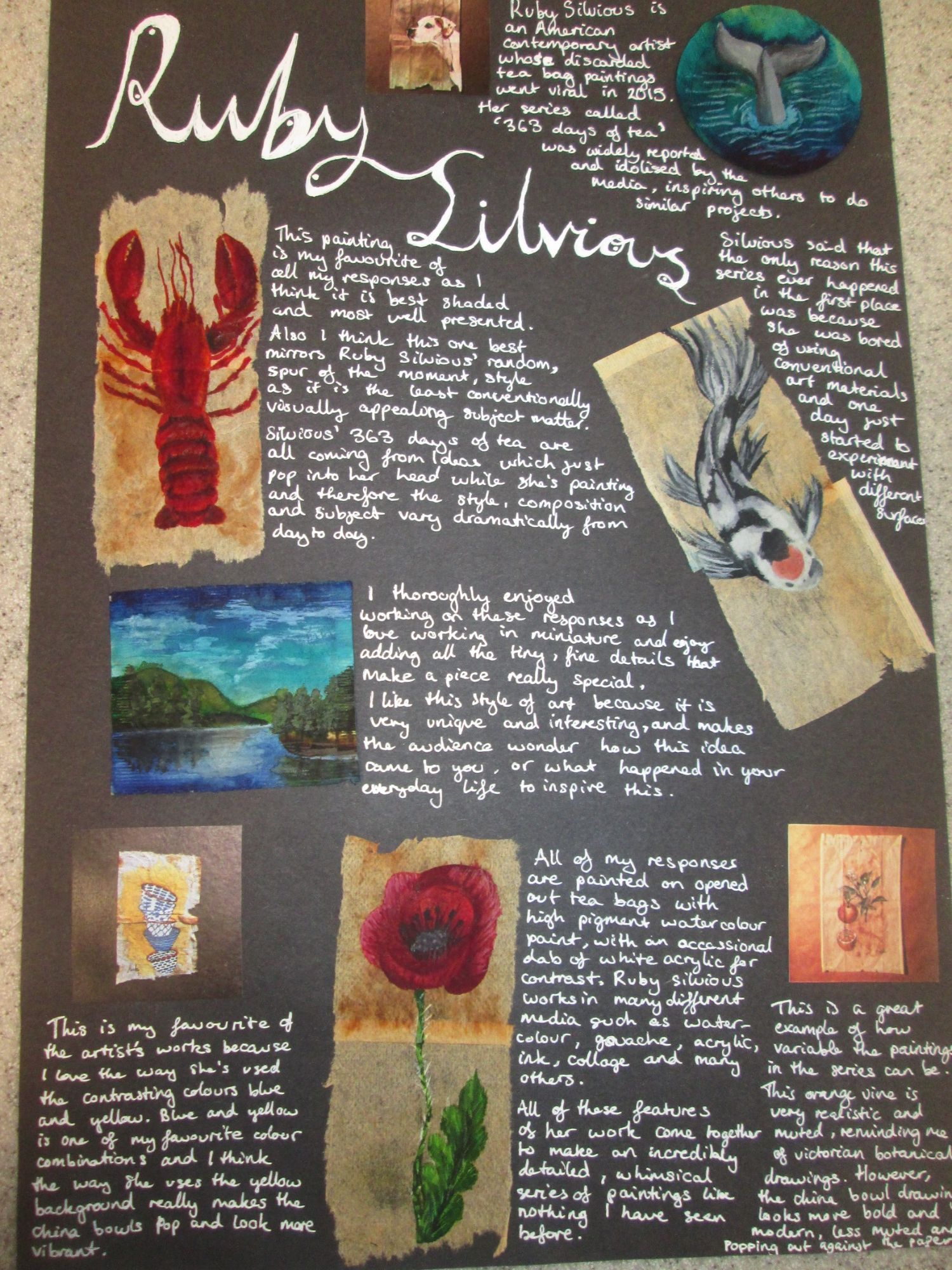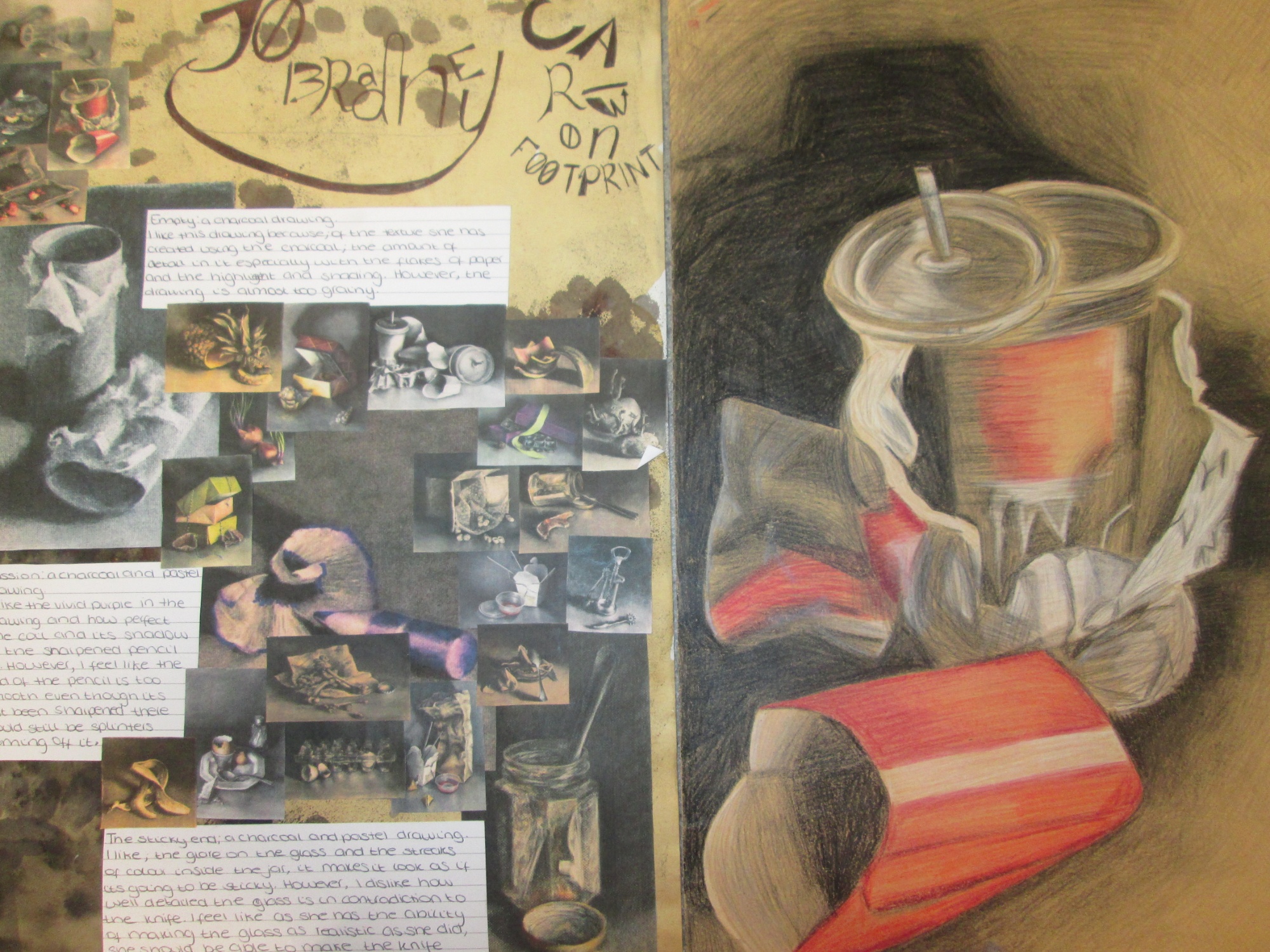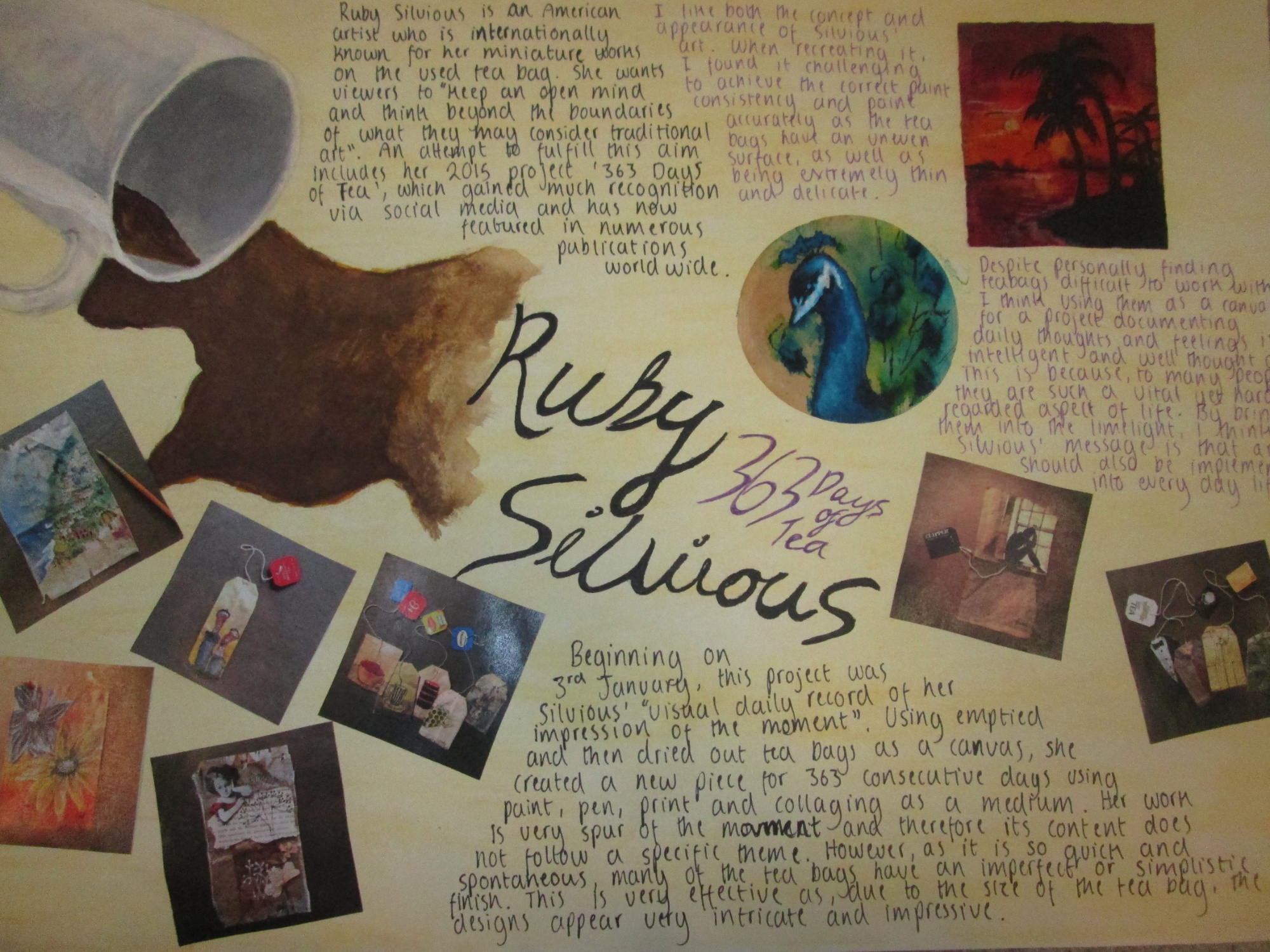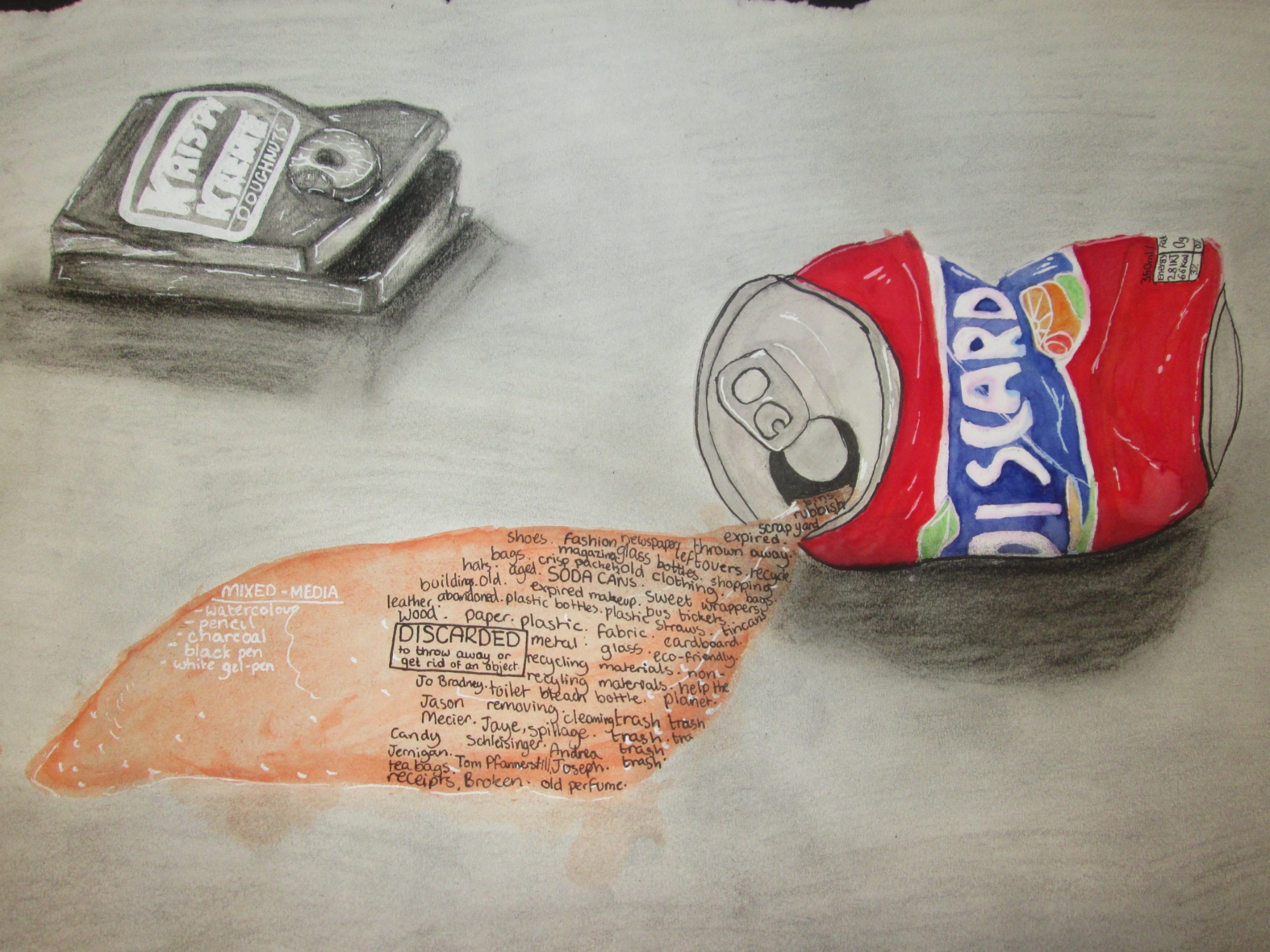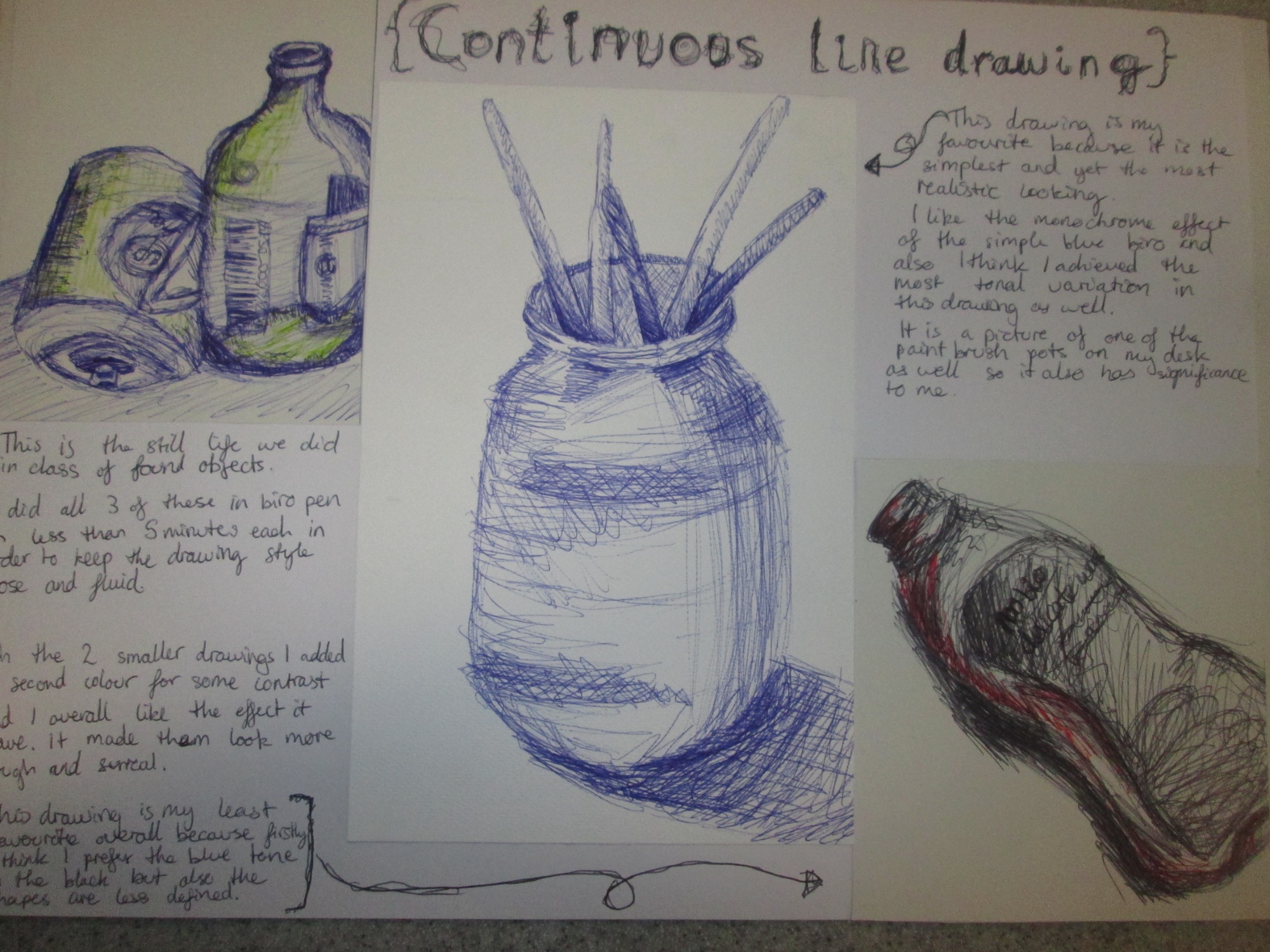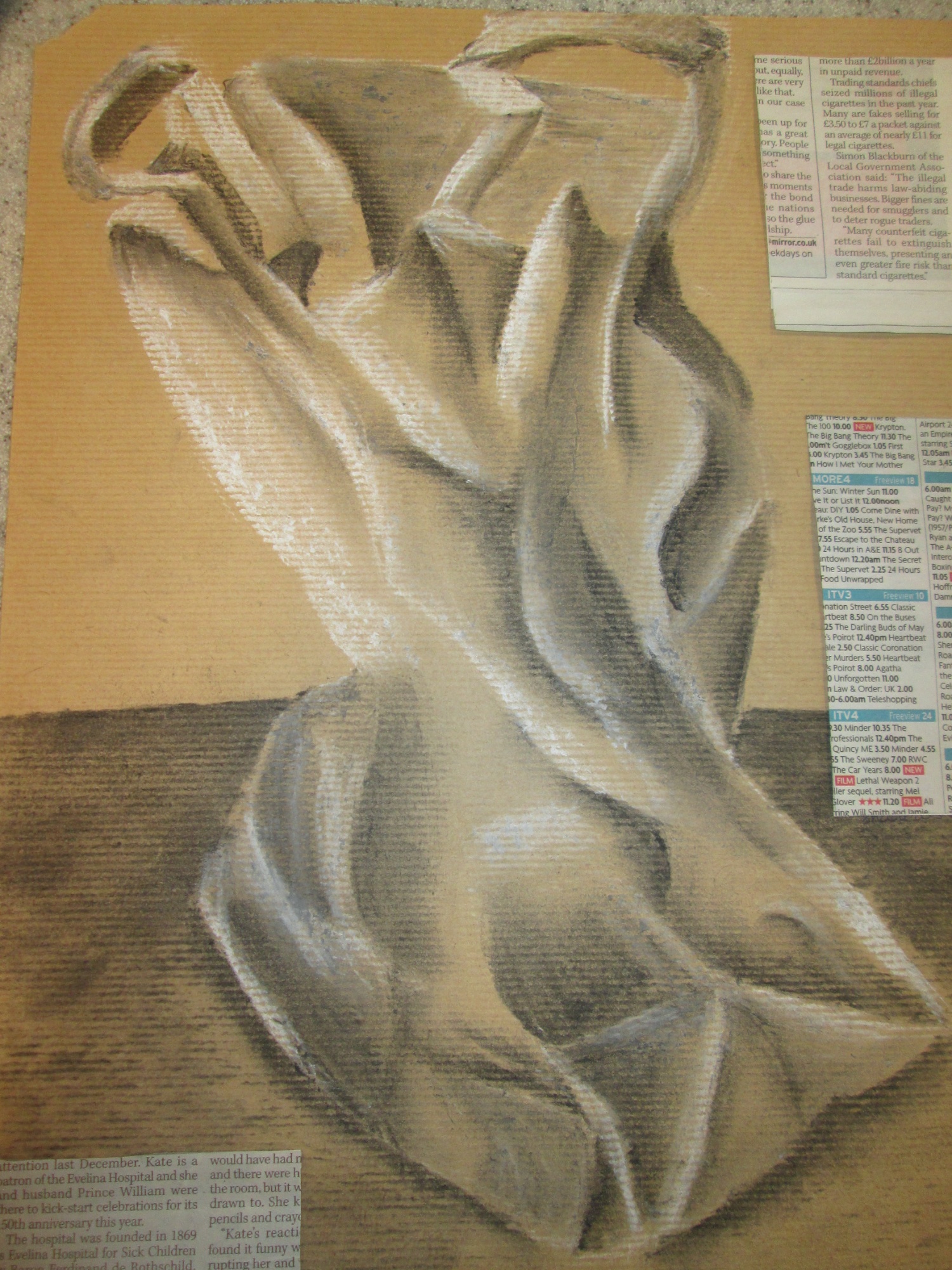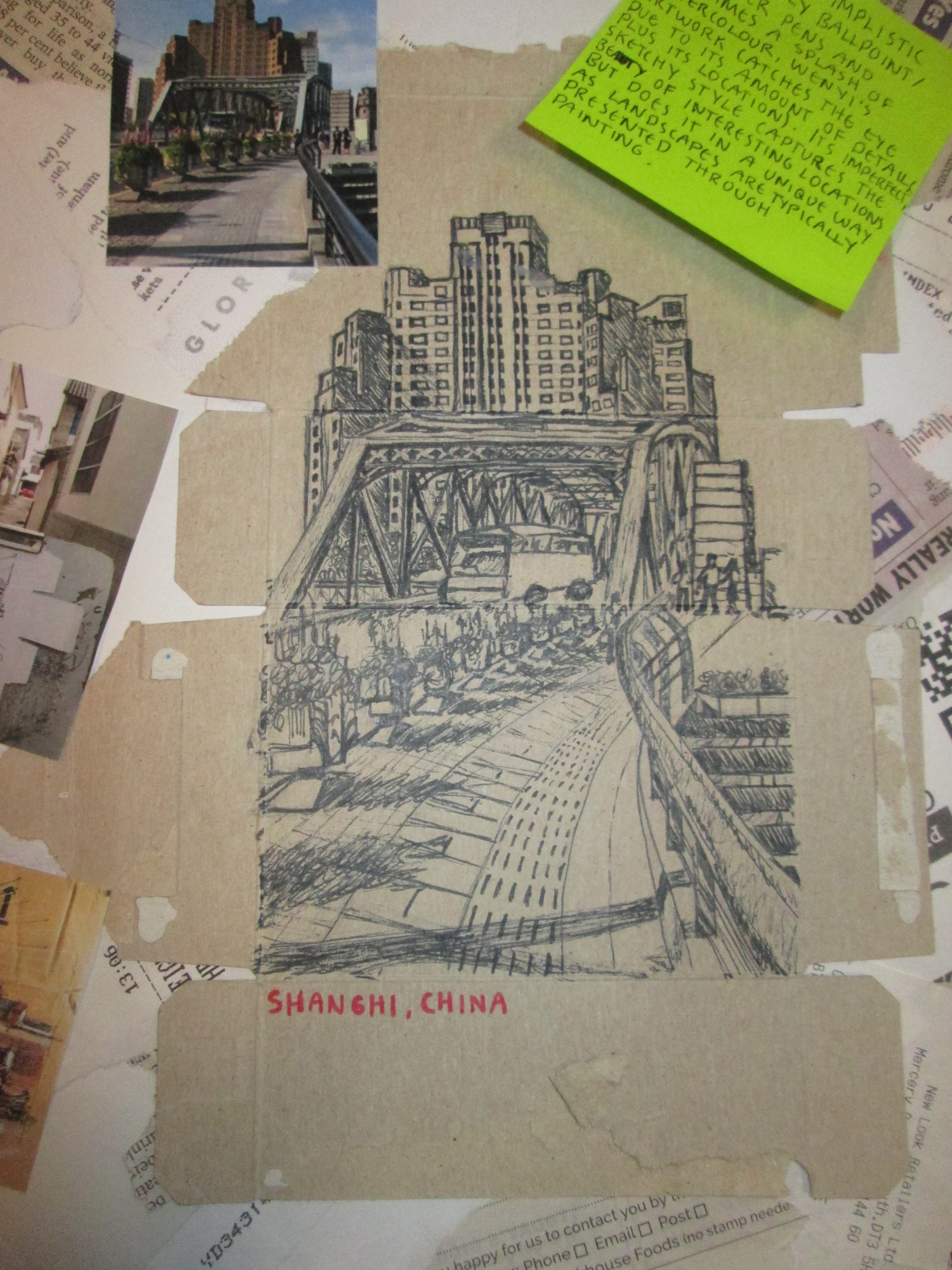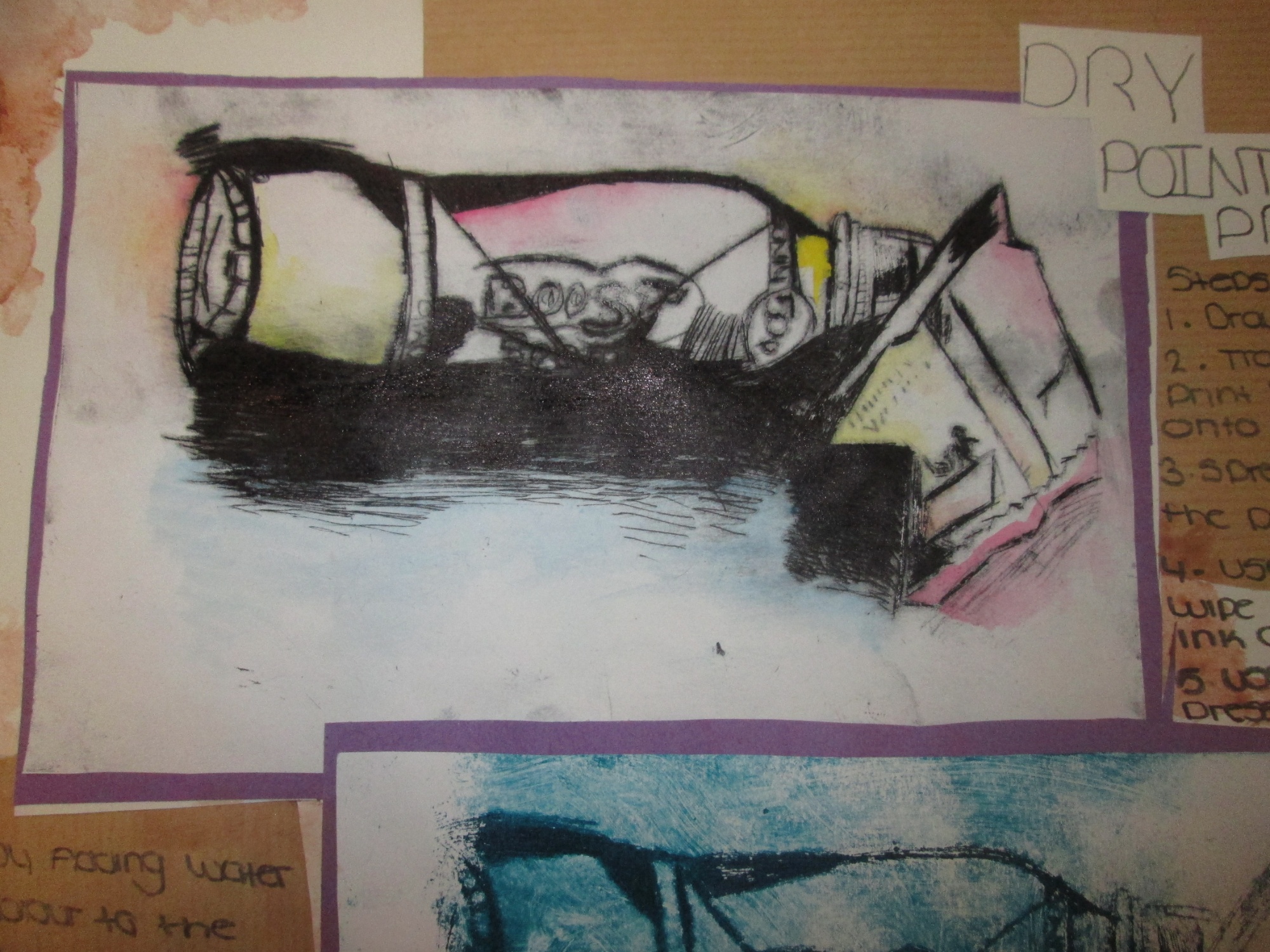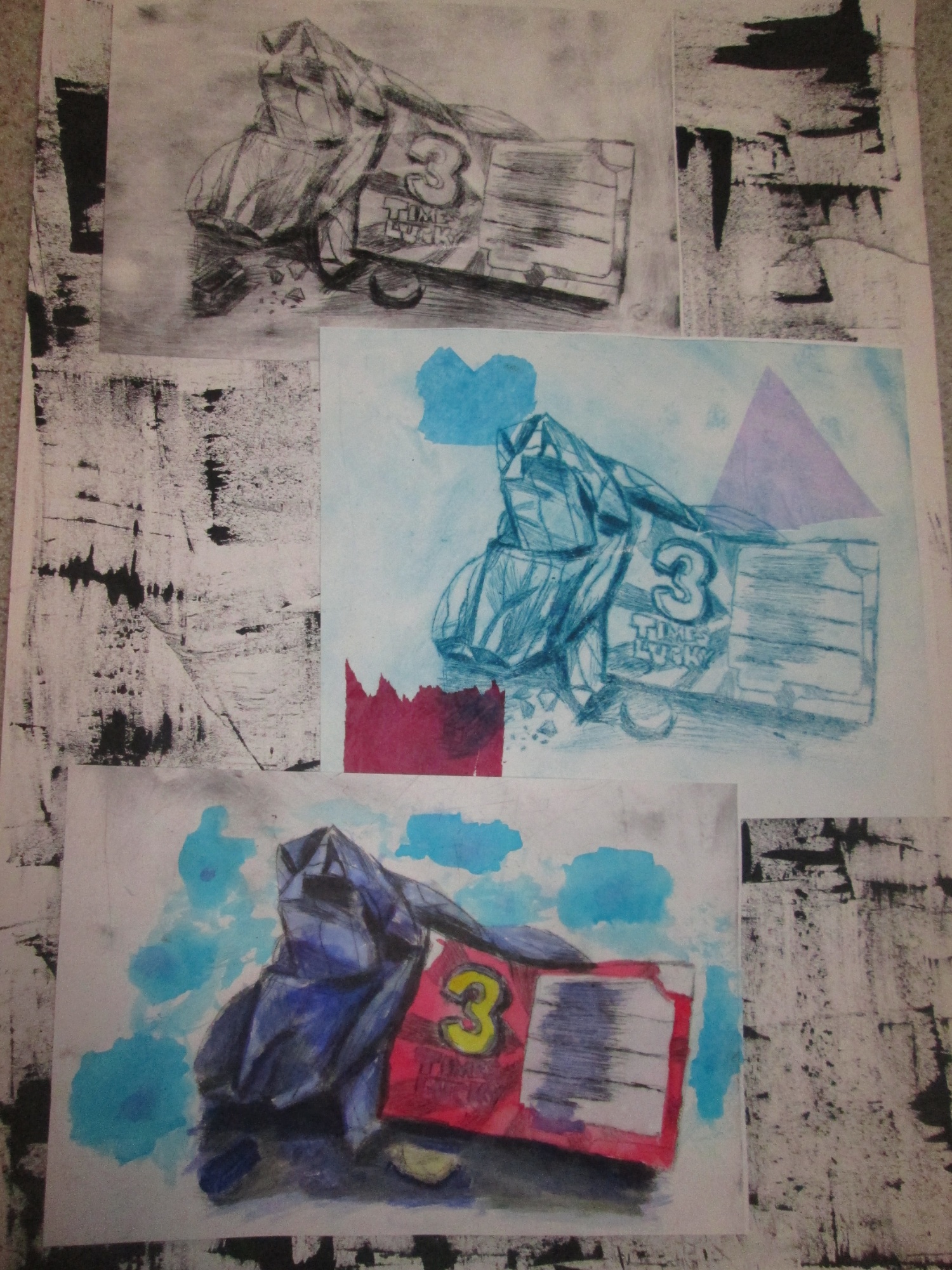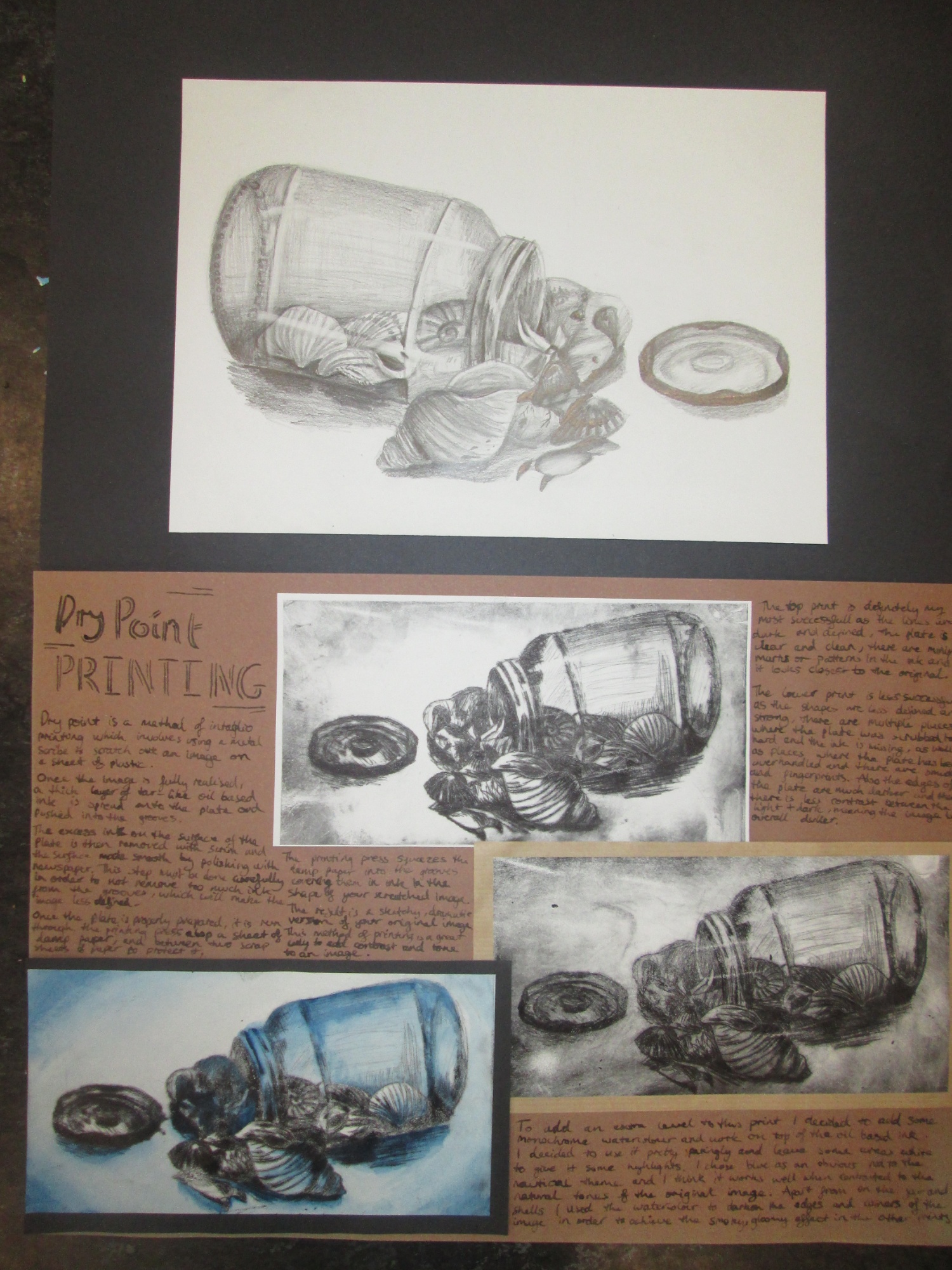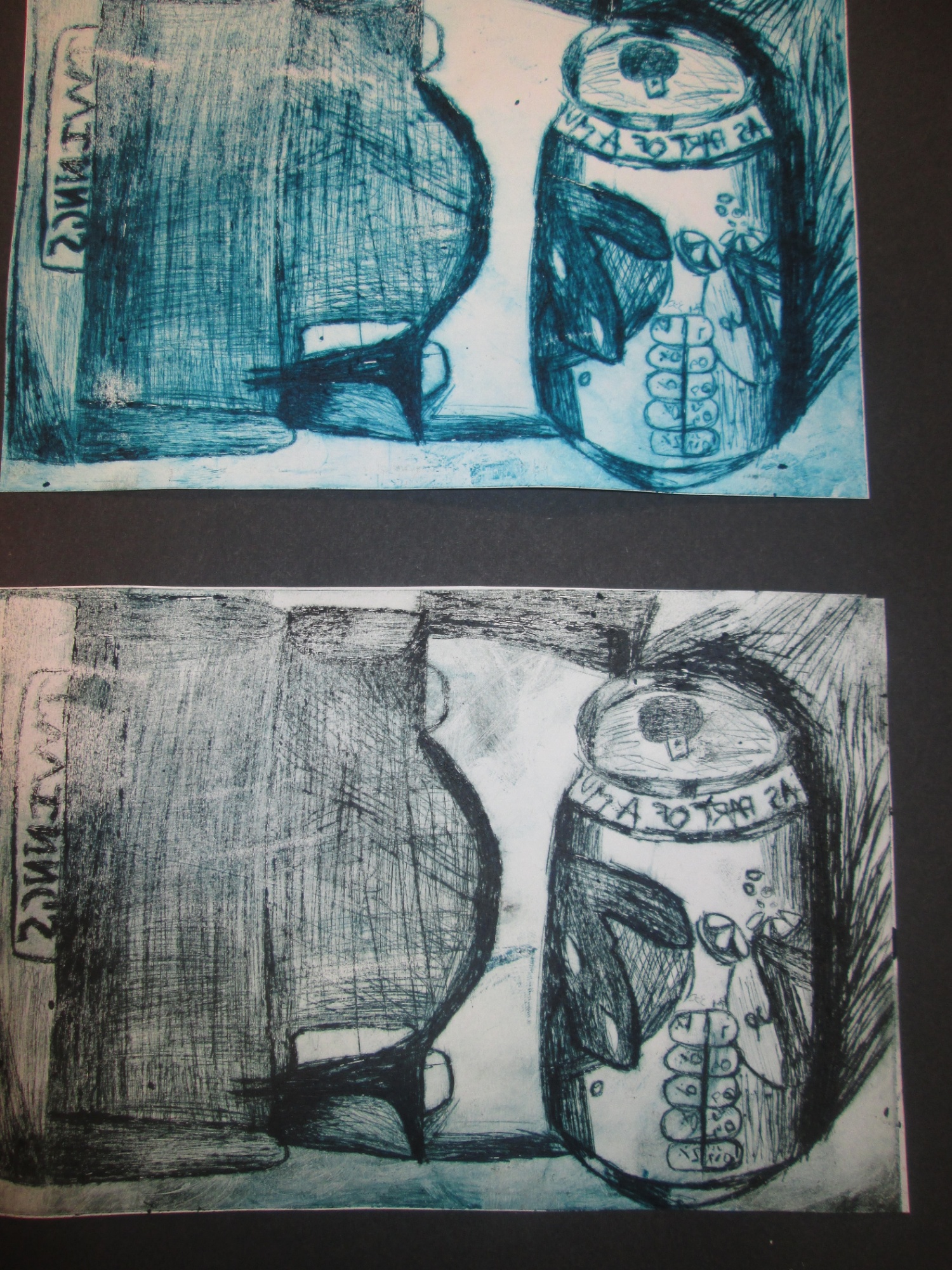Art & Design
Curriculum Intent
Art and Design enables students to experience new materials and processes, as well as build upon existing artistic knowledge and skills. The department aims to nurture all students to gain an understanding of the key concepts within Art and Design and to be exposed to different art styles through the study of both traditional and contemporary artists’ work. We encourage creative thinking, problem-solving and independent learning, all developed through working within a range of art disciplines.
Year 7
Students begin their Art and Design journey at Fullhurst by exploring a range of techniques in recording observational drawings through mixed media. This includes painting, drawing and shading, technical drawing and handling materials. Students in year 7 will focus on the project theme ‘Introductory Skills’ in which they will study 4 artists from various periods in history in order to gain inspiration and knowledge to create their own personalised art piece. Artists include Vincent Van Gogh, Roy Lichtenstein and Andy Warhol. Students will delve into architecture and the works of Antoni Gaudi to examine how nature influences his work to form links between the natural form and building design. Students will learn about the 6 formal elements: colour, shape, texture, tone, pattern and line and learn how to experiment with colour. They will complete two skills assessments based on the new techniques they have learnt in relation to the artists.
Year 8
Students build upon skills taught in year 7 and are introduced to our ‘Day of the Dead’ themed project. Students investigate the project title via primary research, secondary research, developmental ideas and ultimately create final pieces. Students discover the art of print making and complete a series of prints using lino and mono printing methods. Allowing students to develop printing skills in more depth and explore negative and positive shapes, reduction processes, intricate designs and printing onto layered backgrounds. Students grow in confidence and discover how to handle new materials to improve technical skills when using both coloured and Indian ink. Focusing on studies by Carissa Rose to create research pages, recalling artist information and transcriptions of her work and style.
Year 9
Students will complete a themed project, ‘Me, Myself and I’, a broad topic that allows for personalisation and explores a range of artistic media and processes. Students will study a range of works by both traditional and contemporary artists, including the painter and sculptor Amedeo Modigliani, mixed media work by Deb Weiers and illustrations by Danny Gregory. Having studied these artists, students will explore drawing, mixed media collage and clay processes, producing their own personal outcomes based on the artists’ work. Teaching and learning is planned to build on processes learnt during years 7 and 8 and will develop students’ independence as artists, in preparation for further study at BTEC level. Have a look at the video below for an overview of the KS3 Art Curriculum.
GCSE Art and Design
Year 10
GCSE Art and Design at Fullhurst is a busy and vibrant course in which students get the opportunity to explore the use of a wide variety of materials, techniques and processes across the art disciplines (painting and drawing, printmaking, ceramics, photography and textiles). Students develop their Art ability by building on the core skills they have developed in Year 7, 8, and 9, developing and refining their knowledge and creative skills in more depth as they progress throughout their GCSE. The projects set in year 10 encourage students to research and investigate a theme, analyse relative artists, explore and experiment with materials and techniques in greater depth and develop their own final outcomes in response to their research. We encourage students to work outside their comfort zone in order to develop their creative process.
Lessons are designed to stimulate and encourage imaginative and sensitive responses, and balance practical sessions with a focus on historical and contemporary artist research and analysis. Students will work towards completing one coursework project in year 10 and begin a second at the end of the first year.
Year 11
In Year 11, students will work towards completing their second coursework project in response to themes set by the teacher and should demonstrate students’ ability to research and develop ideas independently, using a variety of media and processes. project. The Portfolio (60% of grade) consists of the two coursework projects developed over Year 10 and 11. Students receive individual tutorials and written feedback on a regular basis to encourage and motivate progress and attainment, leading to the completion of the GCSE portfolio by the end of the Autumn term in year 11. Students will then work towards a final exam project (40% of grade) in the final stages of the course. Planning and preparation for a project chosen by students from a selection set externally by the exam board AQA will take place over three months. Teachers will support students during this time to develop ideas that are personal to them. The exam itself takes place over 10 hours (2 days) and enables students to realise their intentions as a final outcome, in their chosen medium.
Examples of Student Work
Year 10
Students in GCSE Art and Design have been studying artists and making observational drawings based on the theme of ‘Discarded’.
They have made pencil, biro and chalk/charcoal drawings from direct observation of still life objects. They have studied the artist Jo Bradney who draws the remnants of her day – left-over food, crumpled food packaging and have also looked at the artist Ruby Silvious who paints on to used teabags. Some students have looked at the artist Wenyi who draws on to discarded packaging.
Here, they have created exciting artist research pages, demonstrating their understanding of the artist as well as trying the different methods of working.
Dry point prints
Going further, students have developed their original drawings into dry point prints with some fantastic results! It's a method that involves scratching an image into a plate with a pointed tool. These lines create a burr that holds ink, meaning that the print reveals the drawing.
Year 11


























